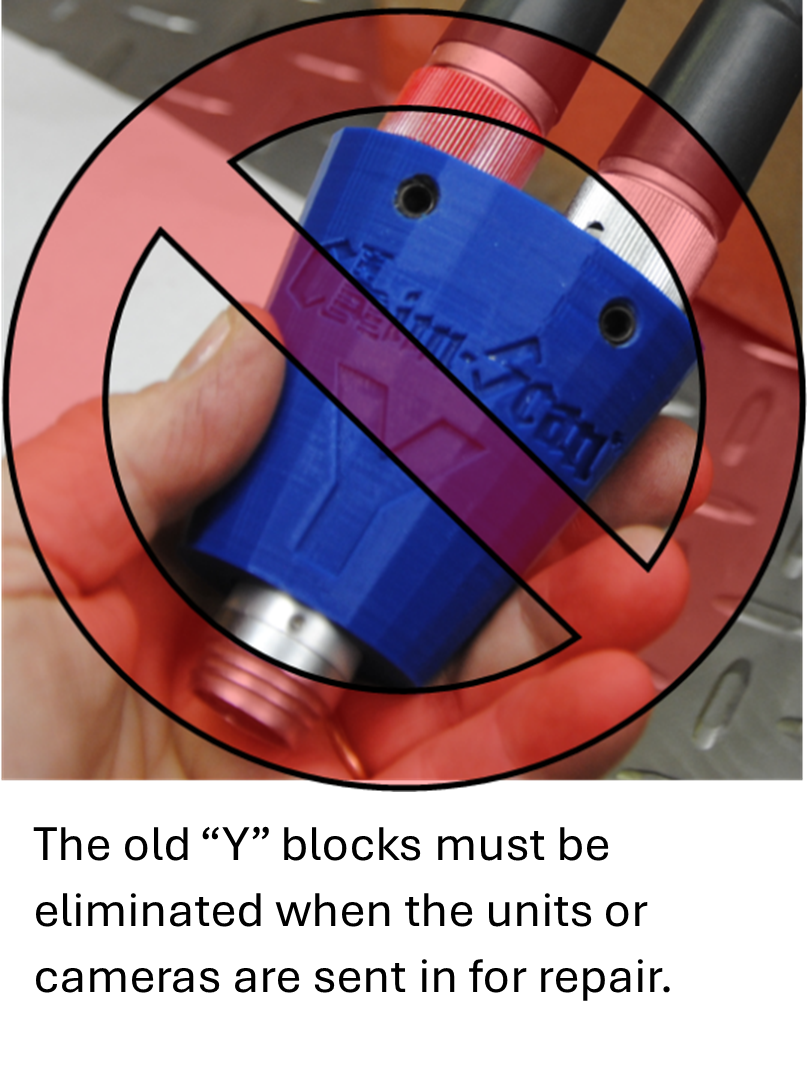Sweeping The White House (1988)
- Thomas Urban

- Aug 22
- 14 min read
Article written for Sweeping by Susan S. Fine for the October issue.
(Small paragraph changes have been made to make it easier to read.)

It was a worst-case scenario. Torrential rains from a tropical storm hit the mid-Atlantic coast just as the 1988 National Chimney Safety Team arrived to clean and inspect the 12 chimneys, 19 flues, and 35 fireplaces at the nation's best-known address: The White House, 1600 Pennsylvania Avenue, Washington, D.C.
Despite the heavy rains and other problems that overrode carefully laid plans and made creativity and flexibility bywords of the hour, the team of eight certified chimney sweeps managed to carry out their assignment in the two-day time period set by the White House.
In the process of making the White House residence and West Wing chimneys clean, safe, and ready for the season's wood fires, they captured indelible memories for them selves.
National Chimney Safety Team members, selected from certified NCSG members nationwide, came from as far away as Oklahoma and California, and as nearby as suburban Maryland.
The team included:
Ashley Eldridge, Ashley Chimney Sweep, Ashland, Virginia;
Victor Imgarten, Clean Sweep Service, Florissant, Missouri;
Dave Johnston, Mill Race Chimney Service, Wooster, Ohio;
Don Leavitt, Leavitt Enterprises, San Diego, California;
Pete Luter, Countryside Chimney Sweep, Roanoke Rapids, North Carolina;
Jerry Neal, Sugarloaf Chimney Sweeps, Barnesville, Maryland;
Larry Pierce, London Towne Chimney Sweep, Bartlesville, Oklahoma; and
Tom Urban, Estoban Corporation, Fairfield, Iowa.
Jim Brewer of Magic Sweep Chimney Sweep, Norfolk, Virginia, who served on the team that conducted the initial White House chimney inspections in early August (see September 1988 Sweeping), was selected for the team, but was unable to serve at the last moment.
The team was accompanied by John Bittner, NCSG executive director. Each team member covered his own expenses.

Memorable Service
A sense of history, awe, reverence, excitement, and the chance to work alongside respected colleagues from around the country - those were the pay-offs that threaded through conversations with team members.
Their work took them to virtually every room of the White House and its West Wing -
The Treaty Room,
Cabinet Room,
Oval Office,
Roosevelt Room,
State Dining Room,
Red, Blue, Green, and East Rooms,
Lincoln Sitting Room and Lincoln Bedroom,
Queen's Sitting Room and Bedroom,
Family dining rooms and the First Family's living quarters,
Vice President's Office
Press Secretary's Office
In short, they noted, every room that everyone in the country has already heard about ... and then some.


In two fast-paced days, they cleaned, video-scanned, inspected, document ed and drew up recommendations for each fireplace and chimney system in the White House, while storing up a host of personal memories:
Viewing one of three signed copies of the Gettysburg Address
Standing where the Emancipation Proclamation was signed and learning that a then-ill Abraham Lincoln had deliberately conquered trembling hands so as to be sure his signature was unmistakably bold
Hearing about the White House "ghost"
Thrilled by the sight of the National Battle Colors proudly displayed in the Cabinet Room,
Having the view from the job site be a little out of the ordinary - the Washington Monument, the Jefferson Memorial, the Ellipse, the Capitol Building.
And they uncovered significant deficiencies in the White House chimneys, ranging from the same kind of poor masonry work seen everywhere, to upside-down dampers, missing flue and chimney walls, mortar gaps in the lintel areas, and a host of fireboxes in need of basic repair, with many bricks literally falling out.
"The whole experience was just incredible for me," noted Pierce. "Just being there was indescribable. It was an honor to be able to contribute my time and skills to this effort. And the pieces of art there ... the paintings! I think that's the biggest personal memory I'll carry away. So many beautiful works of art are displayed everywhere. The sense of history was wonderful. And we were treated so well; everyone was glad we were there and did all they could to help us."
In fact, the sweeping team received expert assistance and a high level of cooperation from the White House staff. The housekeeping personnel quickly removed furniture and laid drop cloths throughout each room, keeping just a step ahead of the team (which laid double sets of their own drop cloths), and then just as swiftly restored each room to spotless precision as work was completed.
The Secret Service personnel, while clearly security-conscious, seemed to enjoy being part of the "sweep team" and extended personal invitations to team members to return in the future with their families. The maintenance personnel and engineering staff accommodated each need that arose, including removing draft inducers from the tops of flues and controlling air pressure in the mansion to assist in dust control.
"President Reagan," chimed in Eldridge, "was very much aware we were coming, the White House staff told us. Reagan was in the room last year when a piece of soapstone from the back firewall in one of the fireplaces fell into the firebox while a fire was going. He's very concerned and aware of the need and knew we were going to be there."
"There was a specific need for what we were doing," Leavitt pointed out. "We found a number of situations that no one else was aware of that were very bad and very unsafe. Certainly, there were a number of chimneys that were very dirty - we had no trouble telling which were the ones that were lit at seven in the morning and kept going all day."
On the Job
While all team members agreed that they didn't approach the White House experience any differently - from a technical standpoint - than any other job ("We give our own customers just as high a level of service as we gave the White House," said Luter), working at the White House did come with its own set of problems, perks and protocols.
For one thing, each sweep had to pass a security check before approval for the team. Then, from the time they arrived at the White House - and the trucks and equipment provided by Neal and Eldridge underwent security checks - team members were under the surveillance of Secret Service personnel assigned directly to them. The main effect this had on job procedures, they noted, was to slow things down. Just to go through the security checkpoints between a fireplace and the trucks, to get a needed tool, for example, might take 30 minutes.
While everyone had hoped for fair weather, the rain slowed things further. Those on the roof relied on foul weather gear and sheer dedication, as Leavitt noted to, "be out there when normal people had enough sense to come inside." Plastic was used to protect video-scanning equipment, which had frequent problems anyway, due to the moisture. And, yes, cleaning had to be done strictly from the roof, since narrow throats and obstructing ledges in the smoke chambers prevented sweeping from below. In some cases, as much as 80 feet of cleaning rod was required to clean the ground-level room flues from top to bottom.
Communications also proved difficult. "The sheer mass and size of the building interfered with headset trans missions," said Johnston. "This, combined with structural peculiarities, resulted in sometimes being able to communicate between the roof and one person downstairs, but a second person standing only three feet away could hear nothing."

"At one time," said Luter, "for us on the roof to get a message to Ashley, it had to go from me, up there on top of the chimney, to the end of the building to Jerry Neal, down into the yard where John [Bittner] was standing, and back into the house to Ashley."
"'We finally learned," said Eldridge, "to use the chimneys themselves, positioning ourselves inside the fireboxes and hanging down into the flues at the top. That way, radio transmissions seemed to work better."
Chimney construction posed a number of problems to overcome. The length of some flues - up to 80 feet of flue was a big factor.
"The White House is deceptive," Neal noted. "It just doesn't look that big from the outside. But there are four stories and the ceilings are nearly 20 feet high, so from the lowest level to the roof was an 80-foot run. I think if any of us had estimated the length by just looking, we'd have all said, 'Oh, bring about 40-foot of rod,' We'd have been able to sweep only about half the chimney!"
According to Leavitt, "At one point, I was hauling down 80 feet of rods, each weighing about 2-3 pounds, through the fireplace, and they suddenly started coming down real fast. I had to grab fast with both hands to keep it from snaking across the room! That was about 21 pounds of rod, a little more than the average job."
Spiraled flue tiles and long lateral runs were other situations encountered. Also, given the number of chimneys and flues, they had to run rods up from inside the firebox to the rooftop sweeping/scanning team in order to signal sweeping readiness down below and identify the correct flue to work on next. There was a wide range of flue sizes, as well as a variety of materials used in fireboxes from soapstone to marble. In all, the team cleaned and inspected every fireplace in the White House mansion itself and the West Wing of the building, from the lowest level to the fourth story, including public and administrative rooms and the personal living quarters of the First Family.
Dirtiest chimney? "The Press Secretary's Office definitely," they all agreed. "We took bags of stuff from that one."
One problem turned out to be one of the "perks" or advantages to working in a place like the White House. When the team first arrived, the building was under negative pressure, and it was very difficult to work against. After mentioning the problem to the engineering staff, however, the team discovered that the White House can completely control the pressure.
"They reversed it, just like that," reported one team member. "So we immediately had an updraft in the fireplaces and were able to proceed without much trouble. I wish I could do that to my own house."
Video Scans & Skills
The team conducted the first video scanning of the White House chimneys, an event that was watched with interest by the security personnel and the engineers.
"All the security people and engineers were really interested," Urban commented. "They examined the Chim-Scan and watched everything we did. And, in our scanning, we found that the workmanship was no better than in any chimneys we see anywhere else in the country."

"That kind of disappointed me," said Neal. "I'd have thought there would be a level of pride of just being at the White House that anyone who worked here would bring to what they were doing. But we saw the same sloppy masonry work here as anywhere else." Sheer skill and experience - not to mention good ears - were telling factors in uncovering another problem. While sweeping one flue, the team realized that "it just didn't sound right." They discovered that an entire section of tile and chimney was missing, so that they were virtually sweeping the backside of the wallpaper in one of the more historic rooms in the mansion.
Dividing into Teams
"Pertaining to organization," explained Eldridge, "we originally designed job duties to get the scanning and sweeping done and to rotate positions so everyone would get a chance at all jobs. With the anticipation of rain, however, we tried to minimize the numbers on the roof and maximize the sweeping we could accomplish. As it turned out, we ended up putting a lot of work into just getting it done, because it was very windy, the communications were very difficult, and we had to go very slowly."

Basically, one team worked at the chimney top with two teams doing room setups, tear downs, and scanner readings down below, then leapfrogging to the next room as the servicing of each fireplace and flue was complete.
Johnston added, "Ashley had it pretty well organized, but our initial game plan fell apart fairly quickly because of the weather and the time it took just to do things in the White House.
I guess I felt proudest that changing our plan didn't matter. We just all worked as a team. We knew without asking what had to be done. We didn't trip over each other or stand around waiting for someone else to do it or give directions. We simply pitched in and worked as a smooth, well-oiled unit. We supported each other completely. We were committed to doing whatever the job took." Others echoed that experience, commenting on what this says about the industry, now. With mature businesses and the technical perspectives that come from experience, controversies that might have been considered important some years back never even came up - indicating an industry cohesiveness and an tacit, near-universal agreement on technical performance and professional standards.
"Just think of it," Urban noted excitedly. "Eight people from different parts of the country got together and within a matter of minutes were cleaning the most prestigious house in the world, in sync.' That's what's really impressive. That we just all of a sudden - wham! - knew what we needed to do, what had to be done. This person did this, this person did that. The cooperation that's what was impressive. "This industry's matured enough," he added, "that though we went through some really nasty, adverse conditions, we could get everything done at the White House without arguing. Eight years ago, if we'd tried to get eight people together for a project like this, it would never have worked. We'd have had controversy over what rods and vacs to use, as well as the debate between top cleaning and bottom cleaning. None of that mattered; there was just a job to do, and we did it. If there were any individual differences over how to do something, they were never brought up. I think that says something about us as an industry."
Confirmed Neal, "Even though there were eight business owners, every thing ran smoothly. There was no arguing; everyone was willing to help and cooperate. The rain was the only negative thing, and that wasn't a big deal either. We got a little wet, but so what? It just messed up the Chim-Scan's a little. All in all, it was just a real positive experience, and I'm glad I was part of that team. Being with my peers is something I really enjoy a lot. Getting together with my friends in the Guild, working, and talking shop is one of the most rewarding things for me. I was honored to be part of this and to do something for my country."

Personally Speaking
How did it feel to "sweep the White House?'' Team members were united in their reverence and awe.
"I'll just never forget it," said Pierce. "It was the chance of a lifetime. I just can't describe how it felt to be in the middle of it all. It's so big and there's so much splendor. I couldn't get enough of it."
"If you were to try to describe to somebody in detail [how it was]," said Imgarten, "I don't know how you'd do it! There was more history there than was even able to be comprehended. The fact that we could look down and up and into every flue and basically every room is something I doubt that anybody will ever forget. There will be some great 'grandfather stories' there to pass along someday. It's just kind of hard to describe the unique feeling of being selected and getting to do it. It's a great honor to have been there and do it ... an honor for me and for the Guild."
Imgarten, it might be added, who has a family background in the jewelry business, provided other team members with room-by-room commentaries on the value of art objects found in the rooms they were in. "It was amazing," said one. "All those priceless things just sitting out there in each room! Unbelievable."
"You know what was the best for me?" asked Leavitt. "The Cabinet Room. Now, you do see the seats and all (in the Cabinet Room) where all these people who make the decisions for the country sit, but the thing that impressed me more about that room was looking across from where I was sitting in the firebox and seeing the National Battle Colors - all four flags for the four services. To look up there and know that each ribbon on each flag is a representation of the defense of the country since the Revolutionary War. They've got 'em all! For me, that was it ... that was really special."
"For me, it was seeing the Gettysburg Address," said Eldridge. "One of only three copies signed by Lincoln himself. I won't ever forget that."
Johnston added, "I think it was about being in service, that's what I'll remember. In the Cabinet Room, I was able to fix the damper that had been installed backwards, and I remember thinking that at least I was doing something, however small, for my country. It was the small things like that that I'll remember about my being there."
"It kind of boggles your mind," said Urban, "how much history and how many people have been there. It'd have been great if we could just have done five chimneys a day and just absorbed the place more. You could call it White House magic, I guess," he added. "We all regarded it as an honor to be there, to work shoulder to shoulder with colleagues we respect, and there was just a real team spirit and cooperation. That's what's so great about chimney sweeps; there's a sense of fellowship that you don't get in other industries."
Spreading the Word
The White House chimney cleaning effort was part industry service and part industry promotion. Although neither the Guild nor any team member can advertise that they've cleaned and inspected the White House chimney, under the working terms set by the White House, there are no restrictions on any media publicity that can be generated, either locally or at a national level.
Consequently, in addition to providing each team member with personal releases to take to their community media, the National Chimney Sweep Guild sent news releases regarding the team and the Guild's efforts to 1200 newspapers nationwide, in an effort to draw attention to the need for all chimneys to be regularly cleaned and inspected.
As Bittner noted in the release, chimney safety is a concern for the First Family and for every family.
(Any Guild member who sees media coverage of the National Chimney Safe ty Team's efforts in their local papers is asked to notify the Guild of the name of the paper in which the article appeared, as well as the date of publication.]
It is expected that positive publicity for every member of the trade will be a spin-off of this service effort. The publicity should come at an ideal time for sweeps, as consumers prepare for the 1988-89 heating season.
It is hoped that this will be the beginning of a regular program of chimney inspection, cleaning and assessment provided by the Guild to the White House. Other projects in other places could follow. Commented Urban, "It's neat that it [the cooperative effort] happened at the White House, but we could do it again anywhere else, even in a ramshackle place in a low-income project someplace."
Added Neal, "Low-income projects... maybe this kind of industry service project is something we need to develop, to look into further as an association."
The Final Word
Urban summarized most succinctly the feelings of all team members about their experience:
"What I saw was professionalism at its highest point. I was glad that I was one of the people picked. Just to stand there in awe in the country's finest house and work with it and work with some of the finest people in the industry . . . all I can say is . . . it doesn't get any better than this. That's basically it ... it was the top of the mountain."
If you want to see the original issue and article, it's downloadable below
Below are photos that were taken by the sweeps from the Chim-Scan Photo Archive. These were scanned in the early 2000s, so image quality may not be the best. Click to expand.

































































I always loved that picture of Tom standing on top of the chimney at the White House.
Long before a roof harness was required.